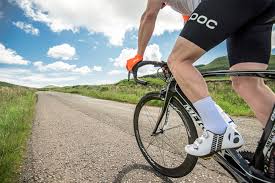
Bike not Buggy
Whilst they may not be Bradley Wiggins, have you noticed how some elderly people still cycle everywhere? This is because they find cycling easier that walking and this article caught my eye. It is from the Guardian and it details how attitudes are slowly changing with cycles being seen as an alternative mobility device to scooters.
Last week, my charity Wheels for Wellbeing published the results of a national survey of disabled cyclists which is, to our knowledge, the first of its kind. The results largely confirmed our suspicions, including that disabled cyclists – though part of our cycling culture – remain excluded from it in a number of ways.
In particular, the results are an endorsement of our flagship campaign seeking recognition for cycles as a mobility aid. In most people’s minds, a mobility aid is a wheelchair, a mobility scooter or a guide dog – but our survey confirms that many people also use bicycles.
In fact, the majority of disabled cyclists (69% of our survey group) find cycling easier than walking and many use their cycle as a mobility aid. Cycling reduces strain on the joints, aids balance and alleviates breathing difficulties – but cycles are not legally recognised in the same way as wheelchairs or mobility scooters.
As a result of this legislative oversight, disabled cyclists regularly encounter difficulties. For instance, our survey revealed that one in three disabled cyclists have been asked to dismount and walk their cycle, even though they were using it as a mobility aid. Typically, such situations occur on footways or in pedestrianised areas, such as train concourses, where mobility scooters are readily permitted but cycles and cycling are not.
Phil, who is 60 and originally from Preston, says: “I use my bike as a sort of rolling walking stick when I walk and I can cycle very long distances without pain. I therefore class my bike as a mobility aid. However, it is very difficult to have this recognised in certain situations – for example in parks or other large outdoor venues. All they see is a bike. It would be so easy to modify a ‘no bikes’ rule to say ‘unless used as a mobility aid’.”
A similar problem also arises when using public transport. As one survey respondent lamented: “I would love to be able to go to places like Lea Valley … but can’t take my trike on the train as it is not viewed as a mobility aid, as a mobility scooter would be.”
It is interesting to note that a further 11% of disabled cyclists said they had been allowed to cycle in a pedestrianised area once they’d explained that their cycle was their mobility aid, suggesting a variation in police and local authority understanding on the issue.
Though the mobility aid concept is clearly an important issue, disabled cyclists said inaccessible cycling infrastructure was the biggest difficulty they face. This is usually down to narrow cycle lanes, bollards and anti-motorcycle barriers that restrict or deny access to non-standard cycles such as handcycles, tricycles and tandems.
The cost of non-standard cycles also featured high on the list of disabled cyclists’ grievances, with a significant number suggesting that the introduction of subsidies would help them to find the right kind of cycle.
Disabled cyclists who responded to the survey were most likely to be middle-aged, tended to cycle regularly (most likely weekly or daily) and cycled mainly for leisure or fun. One statistic that may come as a surprise to many was that the majority of disabled cyclists – 52% – own a standard two-wheeled bicycle. A further 18% said that they own a cycle that uses electric assistance.
The results of our survey challenge some widely held assumptions about disabled people and cycling, and highlight a need to carry out more research. For too long disabled cyclists have been neglected in cycling culture. It’s time for the cycling world to look beyond the bicycle.
- This article was updated on 23 June 2017 to correct a statistic. 52% of disabled cyclists own a two-wheeled bicycle, not 40%.
Most viewed
-

People with depression or anxiety could lose sickness benefits, says UK minister
-
 Live
LiveHumza Yousaf quits as Scotland’s first minister; John Swinney ‘actively’ considering standing for SNP leader – UK politics live
-

‘I felt myself split into before and after’: how giving birth triggered a life-changing illness
-

Who is in the running to replace Humza Yousaf as SNP leader?
-

CJ Sansom, author of the Shardlake novels, dies aged 71
